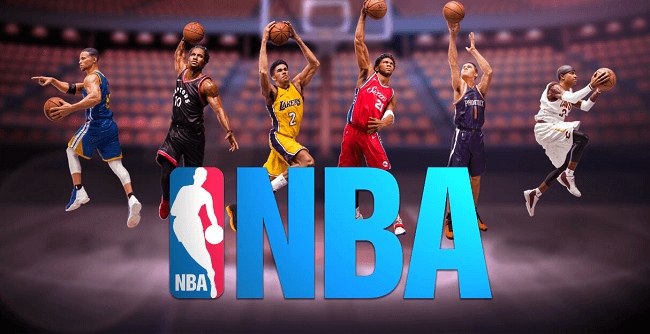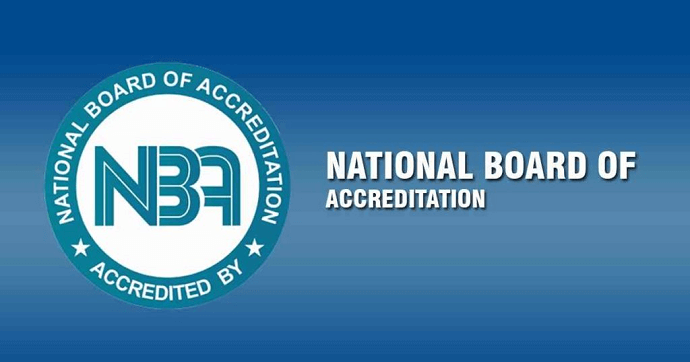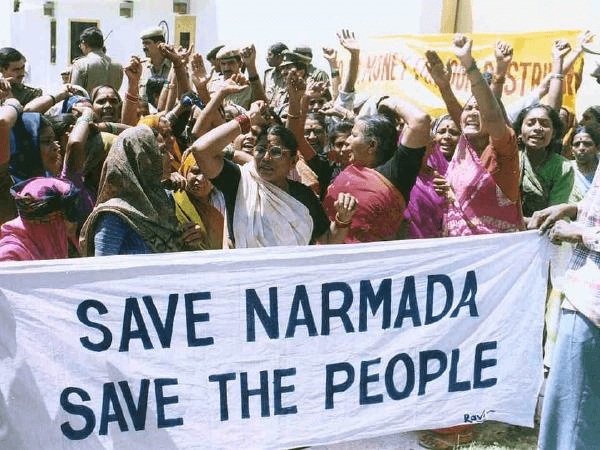What is the full form of NBA(i) NBA: National Basketball AssociationNBA stands for National Basketball Association. It is a widely known competent basketball competition that is usually held in North America. The tournament has been one of the biggest skilful sports tournaments in the United States, as well as Canada, with a total of 30 squads, from which 29 are from the United States and the others are from Canada. It is considered to be the global highest men's competent basketball tournament. On June 6, 1946, the National Basketball Association of America (BAA) was created in NYC. 
Creation of NBANational Basketball Association of America was created in 1946, first by proprietors of the main ice hockey game facilities within the Northeast region, Midwestern U.S., as well as Canada. Although there were previous attempts at this level of basketball leagues, such as America's Basketball tournament and the National Basketball Association, the Basketball Association of America was the inaugural to try to compete mainly in huge venues in metropolitan areas. Nevertheless, before here to 1948-49 campaign, National Basketball League clubs, including Indianapolis, Fort Wayne, Minneapolis, and Rochester, were transferred to that same Basketball Association of America, which helped establish the Basketball Association of America as the competition of option among college players wishing to become professionals. The Basketball Association of America absorbed Denver, Syracuse, Tri-cities, Anderson, Sheboygan, and Waterloo. The championship was renamed here to the current National Basketball Association due to respect toward the union as well as to prevent any difficulties and challenges, even though combined competition kept its Basketball Association of America governing person, notably Maurice Podoloff as chairman. Celtic Dominant in the LeagueCeltic (a club) typically ruled over basketball in the 1960s. The Boston Celtic won around nine titles in 10 seasons, including seven in a row from 1960 to 1966. Additionally, between 1959 and 1966, Boston captured eight consecutive National basketball association titles, spearheaded by Russell, Cousy, and Auerbach. This marks the National Basketball Association's longest title sequence. Despite being champions so many times, the club could not capture the championship during 1966-67. However, they again made a comeback and won the championship once more during 1968-69, and that was in Scottish League Cup. PopularityStarting in 1979, NBA adopted the ABA's 3-point drop ball. Next Season, newcomers Larry Bird with Magic Johnson signed with Boston Celtics as well as Los Angeles Lakers, correspondingly ushering about an era of enormous expansion in National basketball association viewership. They first met in 1979 in the National Collegiate Athletic Association Division 1 basketball championship game, but they eventually faced each other in three National Basketball Association Finals later. Johnson led the Lakers, winning five championships in ten campaigns in the 1980s, while Bird led his Celtics to 3 wins. Regular Season and TeamsThe current competition structure divides thirty clubs between 2 conferences of 3 sections. The existing departmentalization was initially implemented in the 2004-05 campaign. Squads typically start training sessions in mid-September after the holiday of the summer season. Training facilities enable the coach and members to assess athletes, particularly newcomers, analyze the group's pluses and minuses, educate young members about the severe weather conditions, and choose the final 12-man starting line-up and a 3-member reserve list with whom they can start the tournament. PlayoffsFollowing the end of the first phase of the tournament, the National Basketball Association semis (semi-finals) begin around April, with another top 8 clubs within each region, regardless of sectional alignment, for winning the championship or a tournament, such as the Larry O'Bryan Title League Cup. Because the reigning champion meets the 8th seed (a competitor or team in a sport) at the beginning of the semi-finals, the 2nd seed meets the 7th team; the 3rd seed faces the 6th position team, as well as the 4th position, plays against the 5th position. Simply put, obtaining a better seed implies facing a smaller club in the beginning round. Violation in GamesThe NBA management initiated a stoppage (lockout) in 1998, suspending all division work until the latest labour agreement was reached, resulting in the reduction of campaign matches by half. A violent altercation involving athletes and supporters in November 2004 match between Indiana Pacers alongside the Detroit Pistons tainted the team's reputation. Consequently, around nine players were banned for 146 matches, costing $11 million in wages. The National Basketball Association began investigating drug involvement in players in 1983 and then significantly improved its techniques in 1999. In the 1999-2000 schedules, all newcomers were tracked at random in practice sessions. Also, all newcomers were checked three times throughout the season opener matches. (ii) NBA: National Board of AccreditationNBA also stands for National Board of Accreditation. It mainly operates in conjunction with National Assessment and Accreditation Council (NAAC) and is considered among the two significant India-based organizations accountable for higher learning centres' accreditation. The National Board of Accreditation accredits specialized projects such as engineering and technology, whereas the NAAC approves ordinary institutes and educational institutions. 
History and AccreditationThe National Board of Accreditation was formed around 1994 by the All India Council for Technical Education (AICTE), which operated independently until 2010. It was given adequate participation throughout the Washington Accord around 2014. The NBA approves initiatives rather than institutions. Simply put, the main objective of the NBA is to promote and recognize excellence in technical education, including undergraduate and postgraduate level programs in colleges and universities. The disciplines of science and technology, administration, medicine, architecture, practical, creative arts, computer skills, leisure, and tourist managerial staff are recognized streams. Diplomas, undergraduate degrees, and postgraduate degree programs are available in corresponding streams. PurposeThe National Board of Accreditation strategies enables colleges or universities to detect and resolve teaching and learning deficiencies and design ways to improve student performance. It encourages institutes to begin quality enhancement programs and events by encouraging teacher participation. (iii) NBA: Narmada Bachao AndolanNBA also stands for Narmada Bachao Andolan. It is India's most popular movement led by local tribesmen, landowners, experts, including human rights officers in opposition to a series of big dam construction on Narmada that runs throughout the states Gujarat, Maharashtra, Madhya Pradesh, etc. Sardar Sarovar Dam of Gujarat is among the largest projects here on the stream and was among the protest's early focus areas. This is a component of said Narmada Dam Project. The primary goal of the movement was to supply water for agriculture and energy for the residents of the abovementioned regions. 
HistoryThe creation of the Narmada River Conflicts Commission was initially done by the Government of India on October 6, 1969. It was introduced to mediate an entire conflict fueled by state-wide disparities in executing plans and groundwater distribution. The Narmada Committee sought to establish guidelines for relocating and restoring individuals that were affected by its associated projects. After ten years, the judiciary examined the issues, presented them with greater concerns, and replied positively. The commission's conclusion permitted the completion of about thirty large, 135 moderates, with 3,000 minor projects, notably boosting the dam's elevation (Sardar Sarovar). The expectation had been that it would offer groundwater to approximately 40 million inhabitants, cultivation, and energy to residents living there in the surrounding. The people affected by the construction of the dam gave very little information even after getting the promise of compensation. It occurred because people were not contacted nor asked to comment on this assessment. Medha Patkar found that the scheme was not authorized even after requesting information from the government, so she asked whether the first finance was approved by the World Bank. After conducting various research, she found that its executives disregarded the issues after the completion of the project. The building of the Sardar Sarovar dam project restarted in 1999 after permission was granted and finished in 2006. FormationNarmada Bachao Andolan was also supported by various non-governmental organizations founded by locals, experts, and activists with one peaceful strategy. Medha Patkar had been in charge. This included all; nationwide who desired various reform organizations and globally, those who wanted to increase the burden on the World Bank to accept responsibility. World Bank's RoleAfter receiving approval from the Narmada River conflicts Commission, the World Bank commenced the development of the Narmada Plan. The bank dispatched staff to analyze the plan in financial and strategic terms. However, such a group did not prioritize ecological and social problems. Regardless of the devastation caused by Sardar Sarovar's plan, World Bank approved credit to state legislatures for building reasons in 1985. In 1989, Medha Patkar, with some other demonstrators, appeared in Washington DC and discussed about the bank's participation. This was done to put additional pressure on the bank or appoint an authorized group to evaluate the matter. ResultThe judiciary found in favour of the movement, ordering and putting an apparent reference to project construction and instructing the relevant regions to finish the restoration and rebuilding procedure. After the DecisionMedha Patkar is still fighting for the effective restoration of migrated people in M.P., along with the Narmada Commission's guaranteed reimbursement. The government of India has frequently claimed further that the price of relocation is offset more by the benefits of the Narmada Plan, therefore justifying its development.
Next TopicFull Form
|
 For Videos Join Our Youtube Channel: Join Now
For Videos Join Our Youtube Channel: Join Now
Feedback
- Send your Feedback to [email protected]
Help Others, Please Share










